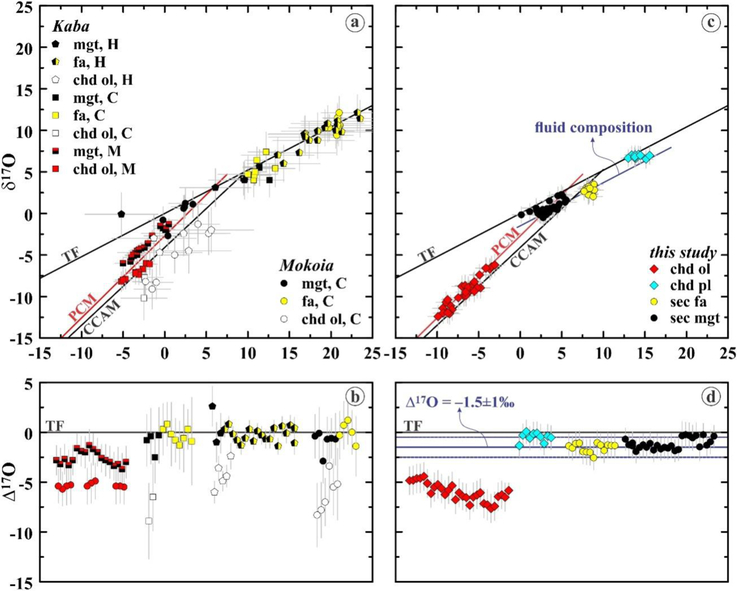Figure 1:
(a, c) Three-isotope oxygen diagram and (b, d) Δ17O values of the chondrule olivine phenocrysts (chd ol), chondrule plagioclase/feldspathic mesostasis (chd pl), and secondary fayalite (secfa) and magnetite (sec mgt) from the Bali-like oxidized CV3 chondrites, Kaba and Mokoia. (a, b) — Previously published data from (CHOI et al 2000) — (C), (HUA et al 2005) — (H), and (MARROCCHI et al. 2016) — (M). (c, d) — this study. Carbonaceous chondrite anhydrous mineral (CCAM) line (CLAYTON et al. 1977), primitive chondrule minerals (PCM) line (USHIKUBO et al. 2012), and the terrestrìalfractionation (TF) line are shown for reference. Chondrule olivines plot along the PCM line; magnetite andfayalite plot along mass-dependentfractionation line with Δ17O of ~−1.5‰, which corresponds to Δ17O ofan aqueousfluid resulting on formation offayalite and magnetite. Compositions of chondrule olivines are in isotope disequilibrium with chondrule plagioclase/feldspathic mesostases; the latter, however, are in isotopic equilibrium with secondary fayalite and magnetite, suggesting oxygen isotopic exchange with the aqueous fluid

